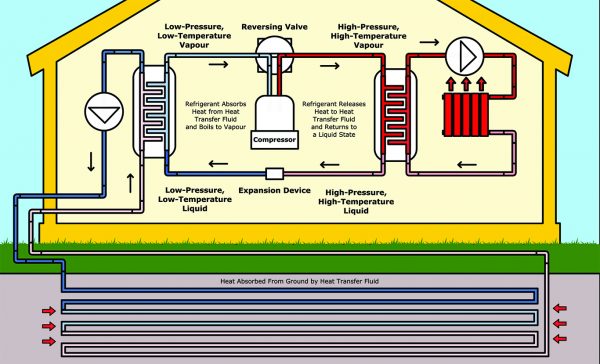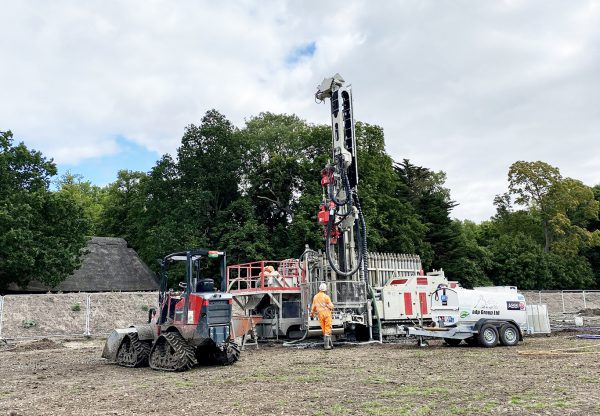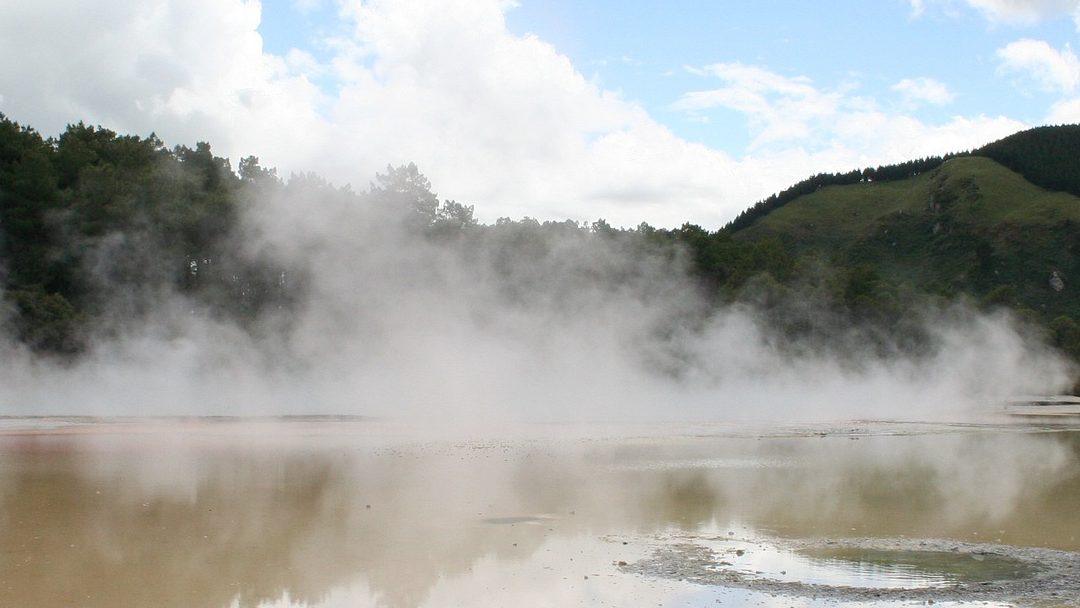Geology and the Ground Source Heat Pump
Geoenvironmental • Geotechnical
Using Ground Source Heat Pumps (GSHP) to extract the warmth in the soil and rocks beneath our homes and businesses, to heat them; is an increasingly popular way to cut harmful emissions, reduce our reliance on fossil fuels and cut soaring energy bills. But the efficient design and operation of GSHP systems rely on understanding geological factors and this is where Ground & Water can help.
What is a GSHP?
In very basic terms, a GSHP works like a giant fridge in reverse. Low temperature heat from the ground, is transferred to a water/anti-freeze mix (brine) circulating in a long pipe collector loop buried deep in the ground. As the brine enters a heat exchanger, its heat is transferred to a refrigerant gas, which is then compressed, raising its heat significantly. This passes through a second heat exchanger to heat water for radiators or to supply a hot water tank.
While they require small amounts of electrical energy to run them their heat energy output can be three to five times the energy input.

But there is no such thing as a free lunch, and GSHPs are expensive to design and install and given they rely on pipes buried several metres BGL, GSHPs are affected by the geology of the ground which surrounds their collector loop.
Therefore prior to design and installation of any GSHP system, a geotechnical site investigation is required to ensure the maximum Coefficient of Performance (CoP) is achieved to maximise output and minimise system and installation costs.
Why?
Geological information like surface and sub-surface temperature, the thermal properties of the soil, water table levels, the ground water flow direction and the type of soils is required for efficient design of the system. GSHPs can be installed in most locations, but the type of system (open or closed loop) and the type and size of the ground collector loop; all depend on local geological conditions.

Ground Collector Loops can be installed in deep boreholes or trenches. Image courtesy of ADP Group Ltd
Geological factors affecting GSHP installation
Thermal Properties of the Ground – This is the rate at which heat can be transferred to the pipes from the ground or from the pipes to the ground. This can be determined by finding the thermal conductivity and diffusivity of the ground.
Thermal Conductivity – Thermal conductivity is the capacity of a material to conduct heat. Thermal conductivity decreases with an increase in porosity of soil and rock, but the amount of variation is different for different types of material. Generally, thermal conductivity and specific heat are increased for saturated rocks.
Thermal Diffusivity – Thermal diffusivity is the rate at which heat is transferred through a medium. The level of water saturation has a significant impact on the thermal conductivity of the ground. Generally, thermal diffusivity is enhanced for saturated rocks.
Temperature – At around 15m BGL the temperature is approximately constant and equal to the mean annual air temperature of that area. The ground absorbs the heat and transmits it down through thermal diffusivity. At times of minimum air temperature ground temperatures are generally slightly higher and at times of maximum air temperatures ground temperatures are lower. This effect is what is utilised for the heating and cooling functionality of a GSHP.
Ground Water – Thermal properties of the ground are affected by its saturation level. Poor quality ground water can also be an issue, as high total dissolved solids contents, can be corrosive depending on their nature.
When a collector loop is below the water table in an aquifer with significant groundwater flow, heat will be transport away from it. This will affect the efficiency of the heat exchanger and can in some cases bring into question the viability of installing a GSHP system.
Ground Conditions and Geotechnical Properties
When a GSHP system is installed following ground engineering aspects need to be considered to confirm:
- The thickness and the nature of any superficial deposits
- The depth of any weathered bedrock geology
- The strength of the bedrock geology and
- Any hazardous ground conditions.
How Ground & Water can help you
You will see that it is essential that the geological and geotechnical aspects covered above are properly assessed to ensure the most efficient design of Ground Collector Loop, the most cost effective method of installation is adopted and the appropriate selection of the GSHP system. This is because the cost benefit of a GSHP system relies on it delivering sufficient energy cost savings over a defined period to recoup the initial high capital outlay.
If you are considering installing a GSHP heating system in a home, a business or across a new development, Ground & Water, will work with you and your chosen supplier to complete all the necessary ground investigations and produce a geotechnical report to inform the design and installation of your system.
